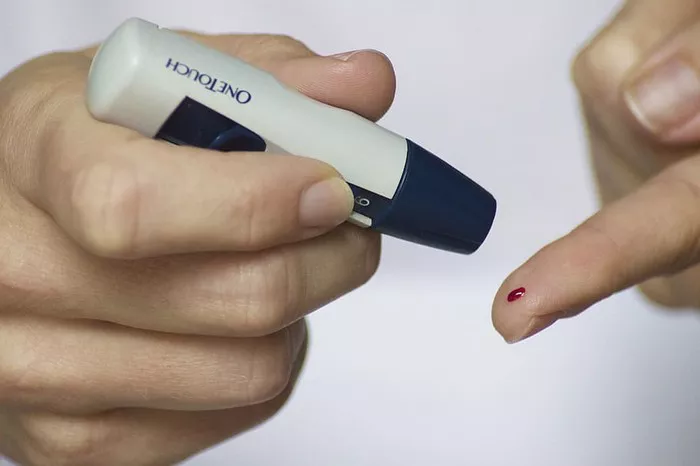Type 1 diabetes (T1D) requires careful management of diet and lifestyle to maintain stable blood sugar levels and prevent complications. While there is no specific list of foods that individuals with T1D cannot eat, there are certain dietary considerations and restrictions that can help optimize glycemic control and overall health. In this comprehensive guide, we explore the foods and beverages that individuals with T1D may need to limit or avoid, along with practical tips and alternatives for healthy eating.
The Role of Diet in Type 1 Diabetes Management
Diet plays a crucial role in the management of type 1 diabetes, as food choices directly impact blood sugar levels and insulin requirements. While there is no one-size-fits-all approach to nutrition for T1D, individuals can benefit from following general guidelines and making informed choices to support optimal glycemic control and overall well-being.
Key principles of a healthy diet for individuals with T1D include:
1. Balancing Carbohydrates: Monitoring carbohydrate intake and spacing carbohydrates throughout the day to prevent blood sugar spikes.
2. Choosing Nutrient-Dense Foods: Emphasizing whole, minimally processed foods rich in vitamins, minerals, fiber, and antioxidants.
3. Incorporating Protein and Healthy Fats: Including lean proteins and healthy fats to promote satiety, stabilize blood sugar levels, and support overall health.
4. Portion Control: Paying attention to portion sizes and serving sizes to avoid overeating and maintain a healthy weight.
5. Hydration: Drinking plenty of water throughout the day to stay hydrated and support metabolic function.
While many foods can be included in a balanced diet for T1D, there are certain foods and beverages that individuals may need to limit or avoid to optimize blood sugar management and reduce the risk of complications.
Foods and Beverages to Limit or Avoid for Type 1 Diabetes
1. Added Sugars: Foods and beverages high in added sugars can cause rapid spikes in blood sugar levels, contributing to hyperglycemia and increasing the risk of insulin resistance and long-term complications. Examples of foods with added sugars include sugary drinks (soda, fruit juice, energy drinks), candy, cookies, cakes, pastries, and sweetened cereals.
2. High-Glycemic Index (GI) Foods: High-GI foods are rapidly digested and absorbed, leading to sharp increases in blood sugar levels. While low-GI foods are preferred for stable blood sugar control, individuals with T1D may need to limit high-GI foods, such as white bread, white rice, sugary cereals, and refined grains.
3. Processed and Refined Foods: Processed and refined foods often contain high amounts of added sugars, unhealthy fats, and sodium, which can negatively impact blood sugar levels and overall health. Examples include fast food, frozen meals, packaged snacks, processed meats, and sugary breakfast cereals.
4. Sugary Beverages: Sugary beverages provide empty calories and can contribute to weight gain, insulin resistance, and poor blood sugar control. Instead of sugary drinks, individuals with T1D should opt for water, herbal tea, unsweetened coffee, or artificially sweetened beverages.
5. High-Fat Foods: While healthy fats are an important part of a balanced diet, foods high in unhealthy fats, such as saturated and trans fats, can contribute to insulin resistance and cardiovascular disease risk. Limit intake of fried foods, fatty meats, full-fat dairy products, and processed foods containing hydrogenated oils.
6. Alcohol: Alcohol can affect blood sugar levels and increase the risk of hypoglycemia, especially when consumed in excess or on an empty stomach. Individuals with T1D should drink alcohol in moderation and be mindful of its effects on blood sugar, monitoring blood glucose levels closely and avoiding excessive consumption.
7. Artificial Sweeteners: While artificial sweeteners are non-nutritive and do not raise blood sugar levels, some individuals with T1D may experience gastrointestinal discomfort or other adverse effects from consuming large amounts of artificial sweeteners. Moderation is key when using artificial sweeteners as sugar substitutes.
Practical Tips for Healthy Eating with Type 1 Diabetes
1. Read Food Labels: Pay attention to nutrition labels and ingredient lists when shopping for groceries, choosing products with minimal added sugars, unhealthy fats, and sodium. Look for whole foods with short ingredient lists and recognizable ingredients.
2. Cook at Home: Prepare meals and snacks at home using fresh, whole ingredients to have more control over portion sizes, ingredients, and cooking methods. Experiment with healthy recipes and cooking techniques to make nutritious and delicious meals.
3. Practice Portion Control: Use measuring cups, spoons, and food scales to portion foods and track carbohydrate intake accurately. Be mindful of portion sizes when eating out or enjoying packaged foods, as servings may be larger than recommended.
4. Choose Healthier Alternatives: Replace high-sugar and high-fat foods with healthier alternatives to satisfy cravings and maintain blood sugar control. For example, choose whole fruit instead of fruit juice, plain yogurt instead of flavored yogurt, and air-popped popcorn instead of potato chips.
5. Stay Active: Incorporate regular physical activity into your daily routine to support blood sugar management, improve insulin sensitivity, and promote overall health. Aim for at least 150 minutes of moderate-intensity exercise per week, such as brisk walking, cycling, or swimming.
6. Monitor Blood Sugar Levels: Regularly monitor blood glucose levels using a glucometer or continuous glucose monitoring (CGM) system to track the effects of food, exercise, and medication on blood sugar control. Adjust insulin doses and meal timing as needed to maintain target blood glucose levels.
7. Seek Support: Connect with healthcare professionals, dietitians, and support groups specializing in diabetes care to receive personalized guidance, education, and support for managing your diabetes through diet and lifestyle changes.
Conclusion: Empowering Individuals with Type 1 Diabetes Through Informed Food Choices
While there are no specific foods that individuals with type 1 diabetes cannot eat, there are certain dietary considerations and restrictions that can help optimize blood sugar management and promote overall health. By focusing on whole, minimally processed foods, monitoring carbohydrate intake, and choosing nutrient-dense options, individuals with T1D can maintain stable blood sugar levels, reduce the risk of complications, and enjoy delicious and satisfying meals.
By staying informed, practicing portion control, and making healthy choices, individuals with T1D can take control of their diet and lifestyle to support their long-term well-being and thrive with diabetes. Through education, support, and empowerment, individuals with type 1 diabetes can embrace a balanced and nutritious diet that nourishes their body, mind, and spirit, allowing them to live life to the fullest.

























